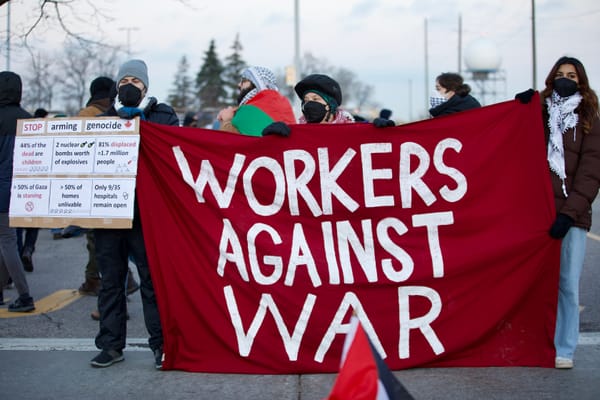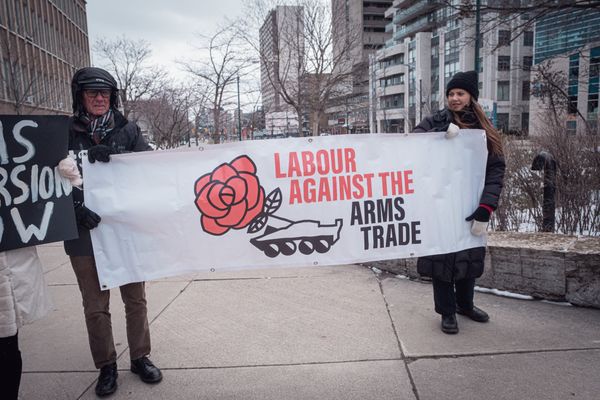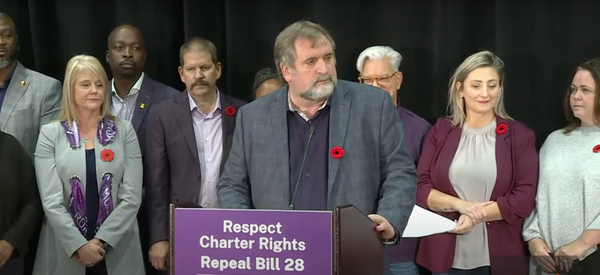Seventy-five days after the federal government invoked the Emergencies Act to clear the so-called Freedom Convoy out of the streets of Ottawa, the convoy is promising to return.
This time, the event, which they’re calling “Rolling Thunder,” is being organized by two groups (Veterans for Freedom and Freedom Fighters Canada) and a YouTube channel (Live From the Shed). They have three days of activities lined up this weekend, including protests, motorcycle tours, a vigil at the War Memorial and a Sunday church service at the Capital City Bikers’ Church in Ottawa’s Vanier neighbourhood. They seem to have swapped out trucks for bikes (better for nuisance, worse for noise, unless Ottawa’s bylaw enforcement actually shows up to work this time). Their official website doesn’t state what the point of the whole thing may be.
This event will coincide with May Day, the international day for workers to show the power of labour. In Ottawa, the Ontario Federation of Labour is organizing a protest at the Ottawa Courthouse, followed by a block party at Confederation Park — everyone should go!
There does seem to be a wrench in the plans for the May 1 events, though. While the bikers are planning to be at church that day, it’s Ottawa police that labour activists should be worried about. In preparing for the bikers, the Ottawa Police Service (OPS) is coordinating an intense attack on free assembly. If protesters operate within the confines of what police have announced to be acceptable, they’ll (supposedly) be fine. If they don’t? Well, it’s anyone’s guess.
An OPS statement released on April 25 says that the force has “developed an enhanced operational approach to manage” the imminent protests. Their statement adds: “Since February, we have adjusted our overall approach to all demonstrations, protests, events and rallies. The right to lawful and peaceful demonstrations will always be protected.”
The statement then notes that, “As a result of [the so-called Freedom Convoy], the City of Ottawa’s position is that no motor vehicle protests, rallies or events will be allowed in the designated downtown core areas. The Ottawa Police is supporting and enforcing that decision. This includes areas near Parliament Hill and the National War Memorial and applies to all demonstrations, rallies and events.”
While the May Day protest at the Ottawa Courthouse will be just outside of this zone, the block party will be just inside of it, and a large enough rally could easily find itself going inside and outside as well if the crowd were to decide to move from the courthouse to Parliament Hill.
The statement adds, “All motor vehicles will be prohibited from participating in any of these events in these designated areas.” This means that on May Day, no flatbed trucks or vans can be used to transport or power sound systems, help people who need assistance move from one location to another, or for whatever else organizers might have in mind.
OPS has also promised to have a heightened police presence, and closely monitor online communication.
Sure, we can say Rolling Thunder poses such a threat to the people of Ottawa that it’s worth giving up our liberties for a weekend. But May Day isn’t just any day — it’s a day of worker joy and resistance. And while it isn’t normally celebrated by Canada’s mainstream labour movement (something that has changed, hopefully permanently, thanks to the current Ontario election), it has always been a day radicals organized around. This year, they’ll have to contend with a vehicle exclusion zone, enhanced online surveillance and more cops, because remember, the OPS applies these things equally to all groups, they say.
There’s little doubt that the Rolling Thunder group will get a police escort allowing them to go pretty much wherever they want. Maybe they’ll be diverted through neighbourhoods to save Wellington Street. And maybe the weekend will be beautiful, and organizers can use the quiet downtown area to radicalize people toward fighting for car-free cities (that also permit protest with a variety of tools, including vehicles).
On the day the government invoked the Emergencies Act, I argued in Passage that it was a dangerous mistake. On Monday, the Liberals called an inquiry into their decision, something governments are required to do if they invoke the Act. They did this exactly 60 days after the Act was revoked, and on the last day the legislation outlined that an inquiry had to be called.
Many people argued that the inquiry would be an important check and balance to the powers offered to the government, though a report may not be made public until February 2023. In legal challenges brought against the government for invoking the Act, the federal government has refused to say why it did so, citing cabinet confidentiality.
While we may never find out the official reason for it, we’re forced to deal with the new policing reality that the Act’s invocation has ushered in. These far-right convoys have played the security establishment like a fiddle, and everyone against an unjust status quo will be caught up in the crossfire.
After more than two years of a pandemic where government and businesses conspired to protect profits while Canada’s body count rose up, this May Day should be a day of radical action. It should be a day of rage, where workers express that they’ve absolutely had enough.
But with OPS determining what “free assembly” means, is this even in the realm of possibility?








Member discussion